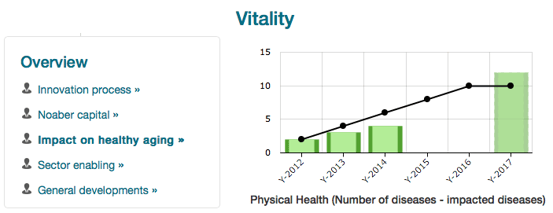
According to a recent JP Morgan/GIIN survey among impact investors, 94% considers measuring social and environmental performance very important because it’s part of their mission. In fact, every impact investor included in this survey thinks impact measurement is important. Most impact investors currently focus on standardised output and outcome indicators to measure their performance, either from the IRIS database or from their own choosing.
They still however face major challenges in practice. Many struggle with a lack of capacity at the investee level, the ability to attribute impact and the costs of measurement. In addition, a lack of standardisation makes it hard to benchmark their investments and understand their performance. Only a few impact investors think it’s important to put a monetary value on the social and environmental performance. Therefore frameworks such as Social Return on Investment (SROI) are not yet very popular among impact investors.
As a pioneering impact investor, Noaber foundation has gained a lot of experience with SROI, which led to development of the online tool Social E-valuator in 2008, the precursor to Sinzer. Together with Kellie Liket (Erasmus University) and experts in the health care sector they developed a strategic impact framework to measure the performance of their impact investments in “healthy aging” activities in the Netherlands.
Noaber Foundation realised that innovative information technology was needed to embed impact management in the core processes of their impact investing. As a result, Noaber Foundation and Sinzer designed an easy to use and flexible online tool that allows impact investors to measure (standardised) indicators for input, output and outcomes.
The strategic impact framework has a flexible structure that can be tailored to an organisations needs. This allows you to define building blocks that show the impact your investees are creating. With minimal effort, you can enter targets and score the performance of their investees.
Noaber Foundation focuses its investments around a common goal: Impact on healthy aging. This allows them to indicate in which health care domains they expect to make a significant impact. More precisely, they have identified nine ‘impact areas’ that they want to monitor. However, they do not set impact indicators top down, but define project-specific indicators for the relevant impact areas in dialogue with the investee.
Beyond their direct impact, Noaber Foundation also wants to monitor the enabling effect that investees have on their sector by changing regulations, user acceptance, reimbursement policies etc. Furthermore, Noaber Foundation monitors the innovation process.
Last but not least, Noaber Foundation wants to understand the added value of their human, financial and social capital. This again is being determined in dialogue with investee and allows them to define their own contribution to the success of the investee.
Today, June 18th, Noaber Foundation and Sinzer proudly present the strategic impact framework, which helps impact investors to structure, monitor and report the impact of their investees.
Want to know more about the strategic impact framework? Download the Case Study via the button below.
What challenges do you face? Please let us know and get a free demo!
-1.jpg?width=232&name=GT%20Sinzer_logo_screen_descriptor%20(1)-1.jpg)

